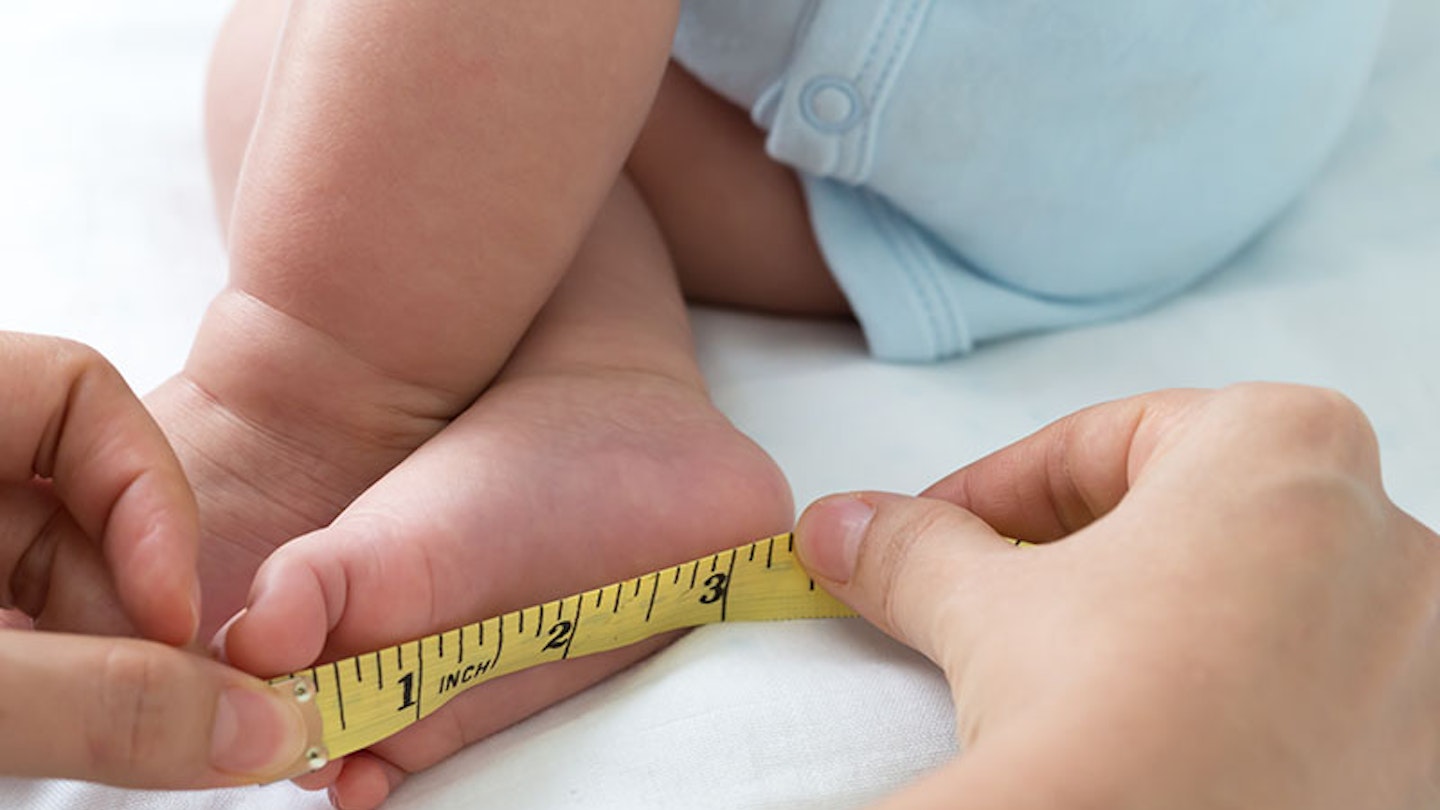Shopping for baby shoes online is a tricky task, especially if your baby’s feet have never been measured. If you’re looking to buy your baby their first pair of shoes, you’ll need to know how to measure your baby’s feet, to make sure you’re purchasing a pair of shoes that will fit them well and feel comfy.
There are a number of ways you can measure children’s feet without having to get them to sit as still as possible for a few minutes.
Measure using paper
This method can easily be done at home and as you’re measuring accurately to the nearest millimetre, all you need to do is check the size chart before buying a pair of shoes to make sure they’ll fit.
-
Lay a piece of plain paper on the floor and get your baby to stand on it with one foot (or ask another grown up to hold them steady as you hold their foot), making sure their toes are flat out and not curled.
-
Use a pencil to put one mark next to their heel and one mark next to their big toe.
-
Measure the distance between each mark with a ruler to the nearest millimeter being as accurate as possible. If one foot is larger, go with the larger measurement and allow no more than 1.5cm for growth.
-
You may also need a width measurement and an ankle measurement for boots so take a tape measure and wrap it around baby's foot from the joint where the big toe begins. And then around the ankle for boots.
Like with grown-up feet, your baby’s feet will be slightly bigger at the end of the day, so it’s best to measure their feet in the afternoon. Try to measure every three to four months to keep up with your baby’s foot development.
Remember, all manufacturers are different, so it’s important to always check the size guide online before buying.
John Lewis measuring services
If like many parents, you’re looking to shop from the John Lewis range for your baby's first shoes, they offer a number of ways to help you measure your baby’s tiny feet accurately.
Book your appointment
An in-store appointment with an expert is the best way to ensure your baby's first shoes fit perfectly. All fitters are trained by either Clarks or Start-rite. You can book your in-store fitting here.
Buy a Start-rite foot gauge
Who remembers putting their feet in those Start-rite or Clarks foot measurers as a child? Did you know that you can now purchase them? This will give you a precise and accurate measurement of your baby’s feet if you’re looking to buy a pair of kids shoes.
The toddler gauge is made for toddlers aged 0-4 and it costs just 10.
How to check shoes fit correctly
Once you’ve got your pair of shoes, you’ll want to make sure they fit your child’s feet.
-
Length - Once your child has their foot in the shoe, make sure their foot is placed right to the back of the shoe and that it is fastened properly. Feel the end of the shoe for your child’s longest toe to make sure there is sufficient growing room. 14 mm is the ideal growing room length.
-
Width - Feel along the sides of the shoe with your hands. There should be no pressure on the sides or pinching so make sure your little one isn’t feeling uncomfortable while you do this and make sure they can also move their little toes.
-
Depth - Press down on the front of the shoe to check there is enough depth for their comfort.
-
Fit at the top - feel around the opening of the shoe where their foot goes in. There should be no gaps.
-
Heel grip - Sit your child down and lift one foot. Pull on the back of the shoe to make sure it grips the heel well and doesn’t come off. Repeat with the other foot.
-
Walking - If they can walk, ask your child to walk to check they are walking easily and naturally in their new shoes. This is also a good opportunity to double check the heel grip and to check for any gaping at the sides.
